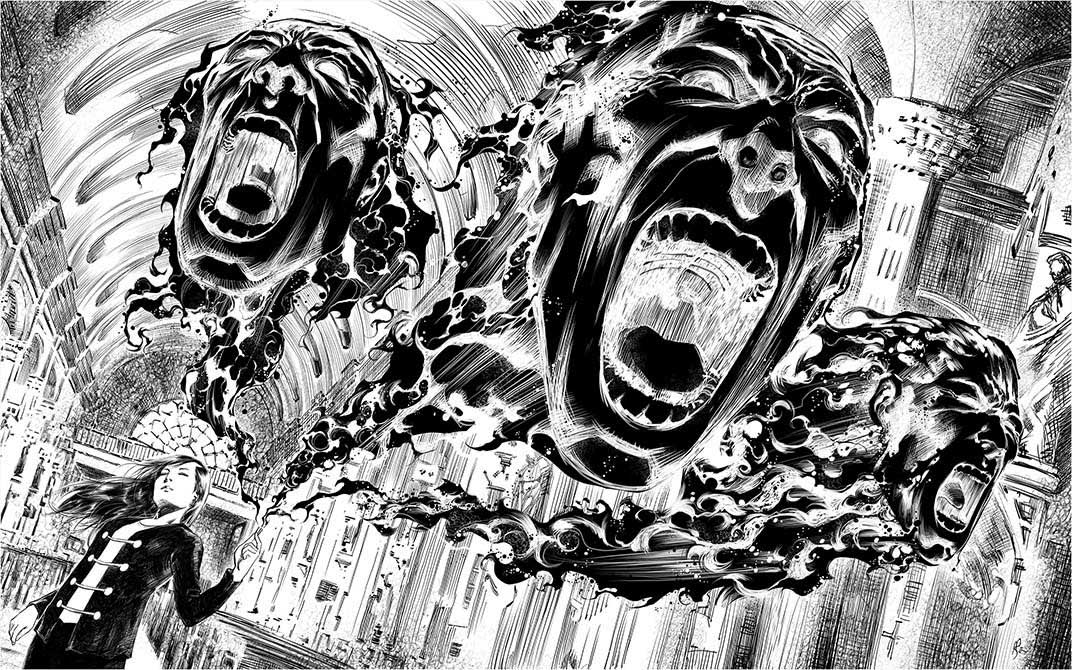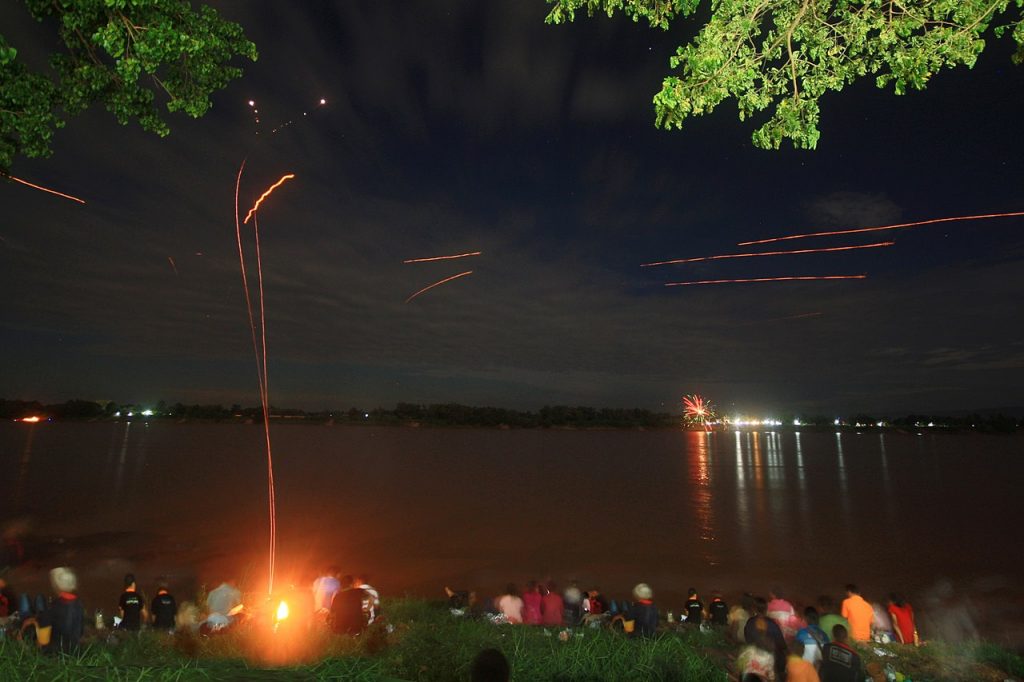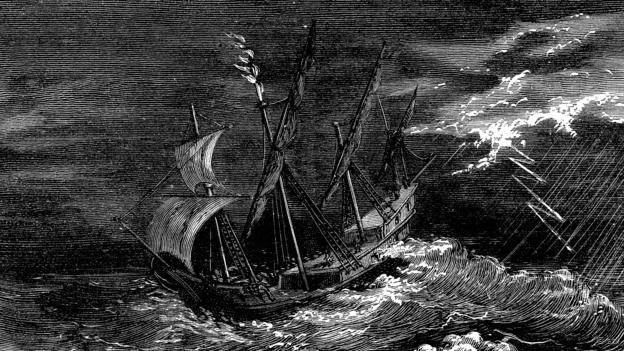Last week on The Aswang Project’s Facebook page, I launched a contest to give away two copies of the Maximo Ramos book “The Creatures of Philippine Lower Mythology”. Part of the entry was to comment with your favourite creature. I was truly shocked with how many people mentioned SANTELMO. Of course I had heard of it and loved its appearance in Trese #3: Mass Murders, but I didn’t know too much about it. So I spent some time digging around.

A Burning Question: What is the Santelmo?
Stories of Santelmo (or Santilmo) say that it is the spirit of a man who has died near a river, lake, ocean, or during heavy rains. The lost soul appears as a ball of fire and some say it seeks revenge on those who may have done him wrong, while others claim the soul is seeking peace.
Wikipedia says, the Santelmo (St. Elmo’s Fire) is a creature of Philippine mythology. The term santelmo is the shortened form of the Tagalog words “Apoy ni San Elmo ” (St. Elmo’s Fire). St. Elmo’s Fire has long served as an omen of heavenly intervention to sailors.
In the Creature of Midnight, Dr. Maximo Ramos states, “Tagalogs, Visayans, and other Filipinos call it Santelmo. It is a ball of fire in fields and swamps. It bounces along and rolls away. It changes into a beast with fire in its mouth. Travelers and fishermen follow it at night. They walk and walk till they are tired out. Then they cannot find their way home. They walk into deep mud and thorny bushes. They get dizzy and become insane. They must reverse their clothes to send it away. Then they can find their way home.”
More recent versions of the Santelmo story say the flaming balls of lights are children who were not baptized before their death.

Great Balls of Fire…in Folklore
Numerous, if not all, cultures have stories attached to them of magical balls of floating light, seemingly under intelligent control, or perhaps even supernatural, sentient forms of life. They travel the skies by night, amazing and sometimes even terrifying those that encounter them. Very often they are seen in the vicinity of marshes, bogs and other watery bodies.
St. Elmo’s fire is a bright blue or violet glow, appearing like fire in some circumstances, from tall, sharply pointed structures such as lightning rods, masts, spires and chimneys, and on aircraft wings or nose cones. St. Elmo’s fire can also appear on leaves and grass, and even at the tips of cattle horns. Often accompanying the glow is a distinct hissing or buzzing sound. It is sometimes confused with, or thought to be, ball lightning.
In Antonio Pigafetta’s journal of his voyage with Ferdinand Magellan. St. Elmo’s fire, also known as “corposants” or “corpusants” from the Portuguese corpo santo (“holy body”), was a phenomenon described in The Lusiads (a Portuguese epic poem by Luís Vaz de Camões).
Nothing chaps my hide more than when “historians” try to give credit to the Spanish for introducing these mythical beings. Undoubtedly the name Santelmo was borrowed from St. Elmo, but the myth itself has more in common with the Japanese shito-dama or ‘Spider Fire of the Spirit of the Dead Akechi” which appears as a fireball over lakes and swamps during poor weather. Rooted in local history, the fireball is a curious and unpleasant thing which has been held responsible for many fires and deaths in ancient Japan. We can also compare it to the Naga Fireballs of Thailand. Traditionally, the fire balls are believed to come from the naga, a mythical serpent that lives in the water. The Philippines had beautiful, intricate and sometimes frightening belief systems well in place long before the Spanish ever arrived. As with all oral traditions, some adaptations can be attributed to foreign influence, but the core of almost all the creatures of Philippine Mythology have solid foundations in Asia – as is evident in comparative folklore studies with Malaysia, China, Japan, and India.

Much like the Kapre, Santelmo likely went by many names in the ancient Philippines until their similarities were unified under a general term.
The (psuedo) Science of Santelmo
Ball lightning is an unexplained atmospheric electrical phenomenon. The term refers to reports of luminous, spherical objects which vary from pea-sized to several meters in diameter. Though usually associated with thunderstorms, it lasts considerably longer than the split-second flash of a lightning bolt. Many early reports say that the ball eventually explodes, sometimes with fatal consequences, leaving behind the odor of sulfur.
Until the 1960s, most scientists argued that ball lightning was not a real phenomenon but an urban myth, despite numerous reports from throughout the world. Laboratory experiments can produce effects that are visually similar to reports of ball lightning, but how these relate to the natural phenomenon remains unclear.
In another theory, the repeated swampy locations of many sightings has given rise to the notion that at least some of the lights may be methane bubbling up out of the marshes and mixing with Phospine, a flammable gas, and an inorganic compound called Diphosphane, which, when combined with the air, can briefly and spontaneously catch fire.

Santelmo: Rekindling Philippine Mythology
If you are lucky enough to catch a glimpse of this ghostly phenomenon, take pause and imagine your ancestor’s awe and wonder upon seeing such a sight. What stories would they create to explain such a harrowing event? If you still wish to dismiss the paranormal elements of the otherworldly floating balls of fire, take time to appreciate that the possibly natural phenomenon has been recognized in folktales from the most advanced civilizations in history. Before you dismiss such things as ignorant superstitions, remember that these are the foundations of imagination and greatness. It is your link to the past.
I, for one, am thrilled to see Santelmo listed among the famous mythical beings of the Philippines, and as a part of the rekindled exploration of traditional Filipino folklore.
Jordan Clark is a Canadian born descendant of Scottish immigrants living on the homelands of the Lekwungen speaking peoples. His interest in Philippine myth and folklore began in 2004. Finding it difficult to track down resources on the topic, he founded The Aswang Project in 2006. Shortly after, he embarked on a 5 year journey, along with producing partner Cheryl Anne del Rosario, to make the 2011 feature length documentary THE ASWANG PHENOMENON – an exploration of the aswang myth and its effects on Philippine society. In 2015 he directed “The Creatures of Philippine Mythology” web-series, which features 3 folkloric beings from the Philippines – the TIKBALANG, KAPRE and BAKUNAWA. Episodes are available to watch on YouTube. Jordan recently oversaw the editing for the English language release of Ferdinand Blumentritt’s DICCIONARIO MITOLÓGICO DE FILIPINAS (Dictionary of Philippine Mythology) and is working on two more releases with fellow creators scheduled for release later this year. When his nose isn’t in a book, he spends time with his amazing Filipina wife of 20 years and their smart and wonderful teenaged daughter.


